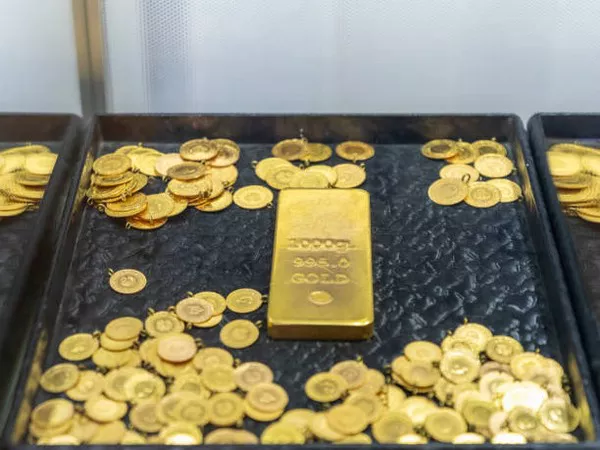In the intricate dance of financial markets, few elements capture the collective imagination quite like gold. Revered for its intrinsic value and historical significance, gold often serves as a barometer of economic stability and a hedge against inflation. However, its relationship with interest rates is a subject of perennial interest and debate among investors and economists alike.
As central banks adjust monetary policy to address economic conditions, changes in interest rates can have profound implications for various asset classes, including gold. Understanding the dynamics at play when interest rates rise is crucial for investors seeking to navigate the complexities of the gold market.
The Relationship Between Gold and Interest Rates
Gold, often referred to as a “safe-haven” asset, tends to move inversely to interest rates in the short to medium term. This inverse relationship stems from several key factors:
Opportunity Cost: Gold, unlike interest-bearing assets such as bonds or savings accounts, does not generate interest or dividends. When interest rates are low, the opportunity cost of holding gold diminishes, making it relatively more attractive to investors seeking to preserve wealth.
Dollar Strength: Gold is priced in U.S. dollars on global markets. When interest rates rise, the U.S. dollar typically strengthens as investors seek higher yields on dollar-denominated assets. A stronger dollar makes gold more expensive for investors holding other currencies, potentially dampening demand.
Inflation Expectations: Gold is often viewed as a hedge against inflation. When interest rates rise in response to higher inflation expectations, gold may benefit from increased demand as investors seek to protect their purchasing power.
Implications for Gold Investors
The impact of rising interest rates on gold is multifaceted and nuanced, prompting investors to reassess their investment strategies:
Portfolio Diversification: Despite the potential short-term headwinds posed by rising interest rates, gold’s role as a diversifier in investment portfolios remains intact. Its low correlation with other assets can help mitigate overall portfolio risk, particularly during periods of economic uncertainty or market volatility.
Tactical Allocation Adjustments: Investors may consider adjusting their allocation to gold within their portfolios in response to changing interest rate dynamics. While short-term price movements can be influenced by interest rate fluctuations, a long-term perspective on gold’s role as a store of value can guide strategic allocation decisions.
Monitoring Inflation Trends: Rising interest rates often coincide with heightened inflation expectations. As such, monitoring inflationary trends and central bank policy responses can provide valuable insights into gold’s potential performance in a rising rate environment.
Currency Considerations: For investors holding non-dollar assets, fluctuations in currency exchange rates can influence the effective returns on gold investments. Factorizing currency risk into investment decisions becomes crucial in assessing the impact of rising interest rates on gold holdings.
Historical Perspectives
Examining historical precedents can offer valuable insights into how gold has performed during periods of rising interest rates:
1970s Stagflation: During the 1970s, a period characterized by stagflation (high inflation coupled with stagnant economic growth), gold experienced a significant bull market. Rising inflation and interest rates fueled demand for gold as a hedge against eroding purchasing power.
Volcker Era: In the early 1980s, then-Federal Reserve Chairman Paul Volcker implemented aggressive monetary tightening to combat inflation. This policy stance led to a sharp increase in interest rates, contributing to a period of consolidation in the gold market as investors adjusted to the new monetary environment.
Post-Global Financial Crisis: Following the global financial crisis of 2008, central banks around the world embarked on unprecedented monetary stimulus measures, including near-zero interest rates and quantitative easing. This environment of ultra-low interest rates fueled a prolonged bull market in gold, driven by concerns over currency debasement and financial instability.
See Also What Are The Advantages And Disadvantages Of The Gold Standard
Conclusion
As interest rates rise, the intricate interplay between monetary policy, inflation expectations, and currency dynamics shapes the trajectory of the gold market. While short-term price fluctuations may occur in response to changing interest rate environments, the enduring appeal of gold as a store of value and portfolio diversifier underscores its relevance in investment strategies.
For investors, maintaining a comprehensive understanding of the factors influencing gold prices and a disciplined approach to portfolio allocation can help navigate the complexities of the gold market in a rising interest rate environment. By staying informed and adaptive, investors can position themselves to harness the potential opportunities presented by gold amidst evolving macroeconomic conditions.


